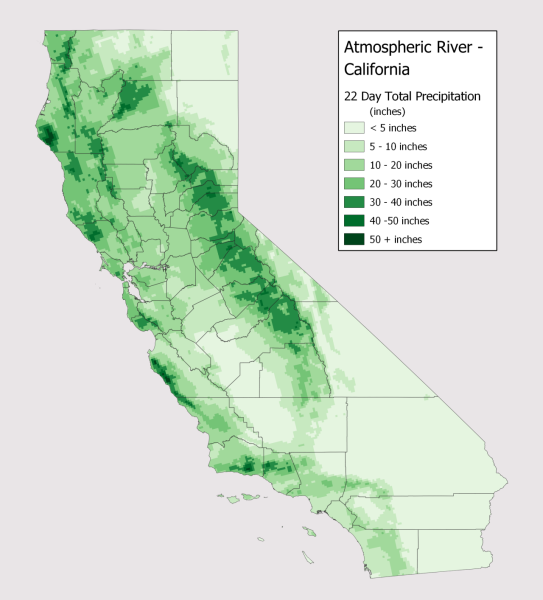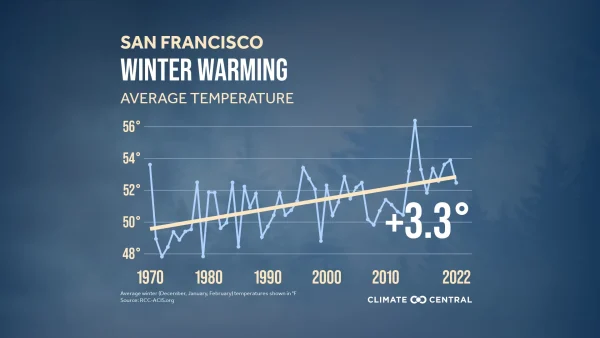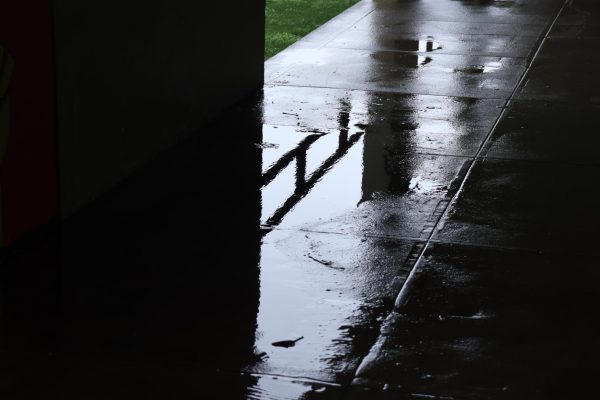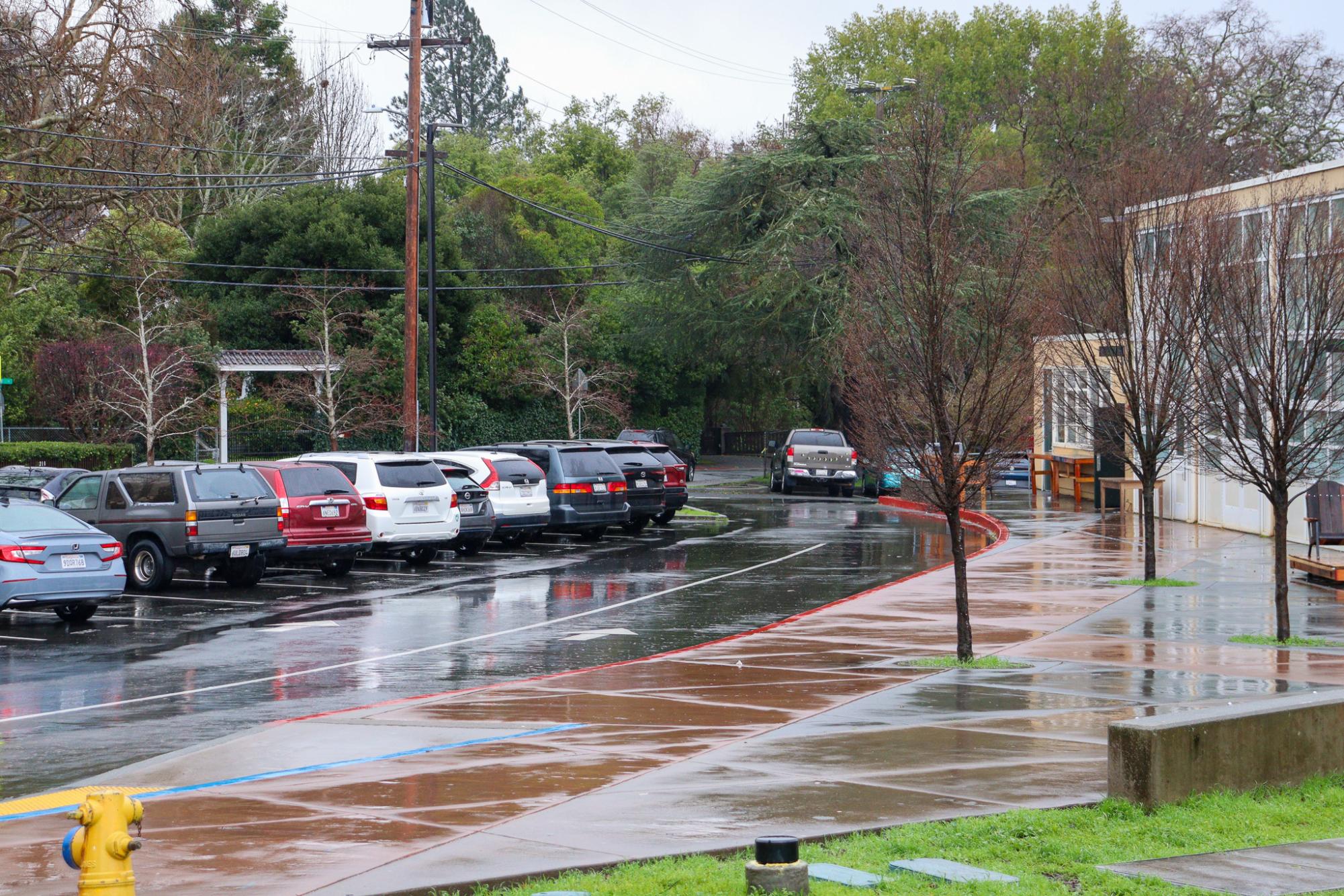As the winter season advances, the effects of climate change become increasingly obvious. Climate change has recently altered winter weather patterns, particularly in California. Intense, stormy weather conditions and temperature variations have started to affect parts of the Bay Area and Northern California.
Toward the end of the fall season, Marin County experienced two types of extreme rainstorms, an atmospheric river and a bomb cyclone storm. During these storms, precipitation levels throughout Marin ranged from 10-12 inches, and wind speeds ranged from 40-50 miles per hour. Storm systems continued to arrive in Marin near the end of fall and early winter.
A powerful storm in the second and third weeks of December caused numerous beaches and roads in West Marin to flood. Water levels were extremely high due to both the storm and a king tide, the highest type of tide that occurs locally twice a year. On December 14, the storm prompted San Francisco’s first ever tornado warning.
Erica Grow Cei is a meteorologist and spokesperson for the National Oceanic and Atmospheric Administration’s National Weather Service (NWS). The NWS provides weather and climate forecasts, including warnings for events like tsunamis, earthquakes, and hurricanes. They also offer information on hydrologics, known as Earth’s water cycle, which atmospheric rivers are a part of.
“Atmospheric rivers are relatively long, narrow regions in the atmosphere, like rivers in the sky, that transport most of the water vapor outside of the tropics. Exceptionally strong atmospheric rivers can transport up to 15 times the amount [of the Mississippi River]. When the atmospheric rivers make landfall, they often release this water vapor in the form of rain or snow,” Grow Cei said.

Bomb cyclones, scientifically known as bombogenesis, are rapidly intensifying rainstorms, somewhat similar to atmospheric rivers. Bomb cyclones distinguish themselves from other types of storms based on how much the storm intensifies over 24 hours. California, particularly the Bay Area, has faced several bomb cyclones in the past, sometimes experiencing more than one in a single year.
“Bombogenesis, a term used by meteorologists, occurs when a midlatitude, between the tropics and polar regions, cyclone rapidly intensifies, or strengthens, over a 24-hour period,” Grow Cei said. “The intensification required to classify as ‘bombogenesis’ varies by latitude. At 60 degrees latitude, it is a drop of at least 24 millibars, 24 hectopascals, over 24 hours.”
Winter storms, including atmospheric rivers and bomb cyclones, affect other events, such as flooding and wildfires. Similarly, a decrease in the snowpack and the compression and hardness of snow cause less meltwater, and consequently a drier landscape. When the ground becomes drier, wildfires are more likely to ignite.
The Sierra Nevada mountains, located in eastern central California and western Nevada, receive about 200-230 inches of snow annually. The snowpack levels in this region are currently fluctuating from about 50-70 percent of normal conditions for the area. This means that the snow isn’t as dense or thick as usual, which causes it to melt more quickly, making meltwater come down from the mountains faster and earlier in the year. Less meltwater in the warmer seasons can dry out the land, so it becomes more susceptible to wildfires.
Brett Anderson is a senior meteorologist at AccuWeather and has worked with the company for 35 years. Anderson designs informational graphics for AccuWeather, co-hosts AccuWeather Network’s Climate Stories show, and writes a global climate change blog.
“When we reach a peak in snowpack in the mountains, normally it’s in spring. What we’ve seen is [the peak] occurring five to 20 days earlier now, compared to the middle of the 20th century. The snowpack season is about 15-30 days less now than it was four years ago,” Anderson said.
Archie Williams freshman Ava Hitchcock used to travel to the Sierra Nevada region almost every year with her family. She has noticed that winter conditions seem to have changed, and she has not been able to visit as much as she would like to.
“I used to love going to places where it snows, like Tahoe, to go skiing or sledding in the winter, because it doesn’t snow here. But I haven’t been able to go much these past few years, because it seems like the snow season is shorter, and there is less snow overall,” Ava said.
When the snowpack is less dense, meltwater streams down from the mountains earlier than usual, and less meltwater comes down from the mountains later in the year. Meltwater fills reservoirs, lakes, and rivers, and also supplies drinking water as well as water for agricultural uses. Each year sees different precipitation levels, sometimes due to climate change, but also in some instances due to normal weather patterns.
Although the changes are subtle in the short term, climate change is impacting California’s weather conditions. Temperatures are affected as well, with the average winter temperature rising and expected to continue to increase in the coming years.
“In terms of temperatures, we’ve seen 70 [degrees] on average. In California, winter temperatures have increased about a half to one and a half degrees Fahrenheit over the past 50 years,” Anderson said.

Rising temperatures, along with lower snowpack levels, directly correlate to floods, drought, and heat waves. Less meltwater coming off of mountains in the warmer months causes the surrounding area to become drier, which elevates the chance of a brush or wildfire starting. Drier spring and summer seasons can cause increases in precipitation.
“The world’s warming temperatures can be directly tied to increased extremes in precipitation; the NCEI [National Centers for Environmental Information] have noted higher incidences of heavy precipitation days, flooding, and drought,” Grow Cei said. “Climate change is also directly related to the duration of heat waves. Most US locations have seen more 90-degree days in the 2020s than they did in the 1990s.”
Although the changes may seem concerning, the state is taking action to combat climate change. Governor Gavin Newsom proposed a new climate plan, which would reduce fossil fuels by 94 percent, cut greenhouse gas emissions by 85 percent, and reduce air pollution by 71 percent by 2045. Organizations including Cal Fire and the Sierra Nevada Alliance are tackling reforestation by growing seedlings from conifer cones. The state government and the National Park Service are working hard to control climate change.

“California is one of the few states in the US that has not reported a significant decrease in annual average snowfall. There has been a small upward tick in annual snow in the Sierra range around Lake Tahoe, and there’s been a small decrease in annual snowfall for the Cascade range where it reaches into the very northern parts of California,” Grow Cei said.
Ross Valley Fire engineer and paramedic Tommy Pastalka has served in the fire industry since 2015. Throughout the years, he has been deployed to countless wildfires, including the Valley Fire, California’s eighth most destructive fire in history.
“When I was a brand new firefighter on the Tam Fire Crew, which is part of Marin County Fire Department, we deployed to the Valley Fire in Lake County. Our Crew Superintendent at the time had decades of fire experience and I remember him telling all of us that the Valley Fire was a career fire, something we may not see much in the future. Since 2015, which is when the Valley Fire occurred, I have been to larger and more destructive fires almost every summer since then,” Pastalka said.
The effects of climate change are taking their toll on the environment. Rising temperatures cause warmer winters, less snowfall, and extreme storms. Higher rain levels and storm systems impact the environment with water shortages and wildfires.
“It appears that we are in a larger drying trend, but the reasons for that vary amongst different people. Whether or not you believe in the human contribution to climate change or our other impacts on the planet, it’s hard to argue with the reality that the fire environment has changed for the worse,” Pastalka said.
Climate change remains an ever-present issue in today’s world. Increasingly severe weather conditions are impacting the planet and personal, professional, and governmental efforts are uniting to combat the effects of climate change.









